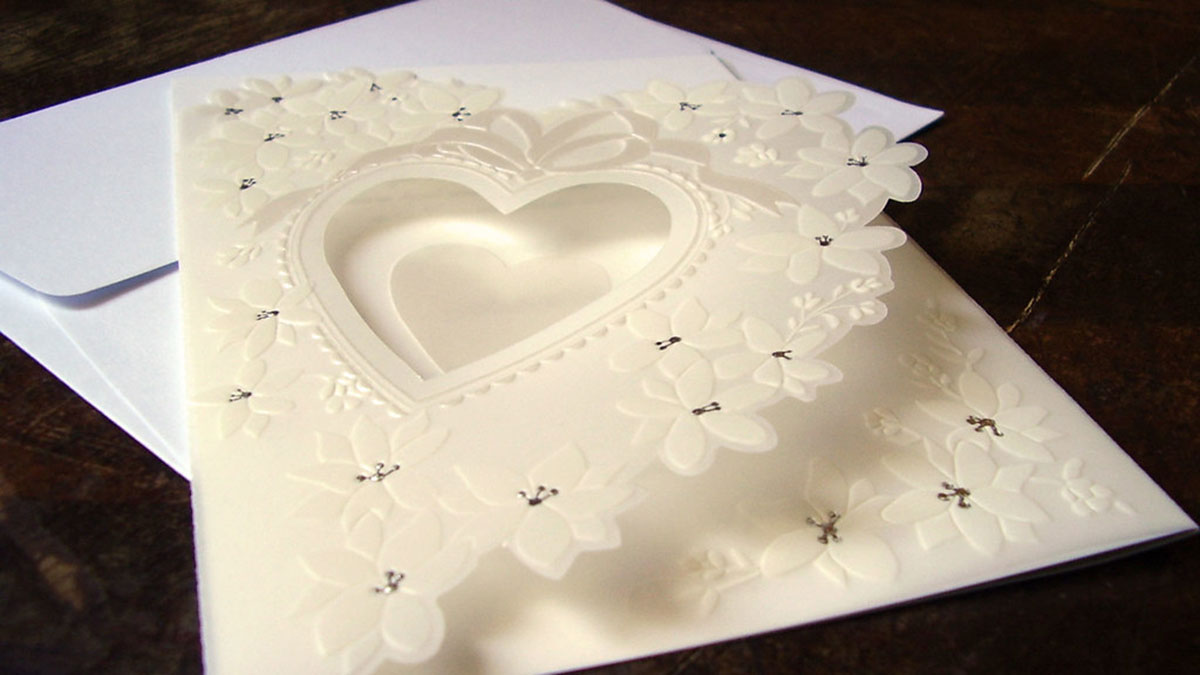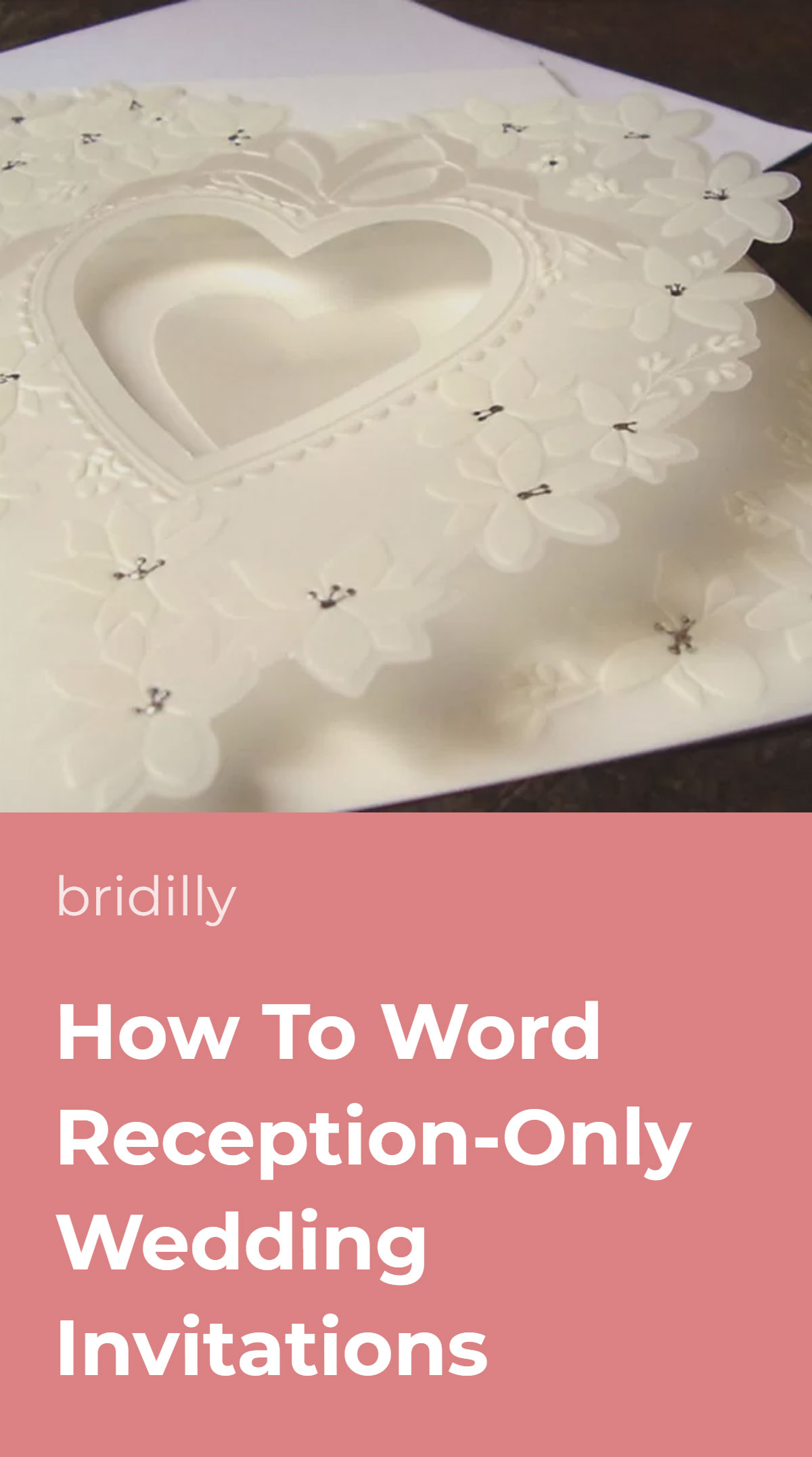A wish to keep the marriage ceremony small is understandable. However, many are confused about how to word wedding reception invitations properly.
Remember that no one will get offended for not being invited to the ceremony unless your explanation is rude.
Wedding etiquette states that you should invite everyone attending the ceremony to the reception, but this rule only works one way.
Some couples host the ceremony and reception on the same day; others postpone the reception for weeks or months. Either way, there’s nothing wrong with limiting your ceremony guest circle.
Most importantly, your reception wedding invitation wording must be informative, precise, and polite, just like in regular invites.
Table of Contents [show]
Define The Wording Style
Regardless of whether your invitations are reception-only or not, you should first define the wording style.
Defining the tone is essential for any piece of stationery because it indicates your wedding’s formality and gives the guests a hint on what to expect.
Keep the tone consistent across all your wedding stationery. Your ceremony and reception-only invitations should be equally formal or casual to show that you respect all guests, even if you didn’t invite them to the ceremony.
Consider your wedding style, location, dress code, and your and your partner’s personalities. Choose formal wording if you host a traditional reception with a semi-formal, formal, or black-tie dress code, especially if you have a plated dinner.
In contrast, you can use a more casual, friendly tone if you host a laid-back reception with a semi-formal or smart casual dress code. The guest count doesn’t play such a significant role as the location and overall atmosphere.
Your invitation formality also depends on who hosts the party and addresses the invites. The invitations are always formal when the couple’s parents host the wedding and address the envelopes.
Mention Who’s Hosting The Party & Couple’s Names
Any wedding invitation begins with outlining the host or hosts and the couple’s names. This information is essential regardless of whether you invite the guests to your ceremony or not.
Historically, the bride’s parents or both sets of parents foot the bill and handle organizational questions.
In this case, they also typically address the invitations, but many couples nowadays take this burden off their parents’ shoulders.
Suppose the bride’s parents host the entire wedding. In that case, the formal wedding invitation wording may start with “Mr. and Mrs. John Peterson invite you to share in the ceremony uniting their daughter…” or similar.
Now, assume the wedding is a collaborative affair of the couple’s parents.
In that case, the invitation may start with “Mr. and Mrs. John Peterson together with Mr. and Mrs. Roger Miller request the pleasure of your company at the wedding of their children…”.
Remember to always use full names with titles. If the parents have different last names, respect the decision, and if the parents are divorced, list their names on separate lines.
When the couple hosts the reception with their parents, the invitation may begin with “Together with their families, Ciara Peterson and Quentin Miller…” or something similar.
Sometimes, the couple foots the bill themselves but still want to honor their parents.
You may use the following wording format “Ciara Peterson, the daughter of Mr. and Mrs. John Peterson, and Quentin Miller, the son of Mr. and Mrs. Roger Miller…”.
In other cases, the parents host the ceremony, and the couple hosts the reception. One may think that mentioning the parents in this scenario is unnecessary, but it’s proper etiquette and a sign of respect.
However, you can ditch the host line altogether in casual invites and only mention the couple by their short names.
How To Word The Invitation is Reception-Only
Every wedding invitation includes a request to attend, either following the host line or the couple’s names. But how to word a request to attend in reception-only invitations politely?
The wording largely depends on the wedding scenario and formality level.
Suppose the ceremony and reception occur on the same day, but the former is reserved for immediate family only. Private wedding ceremony invitation wording for reception-only guests can be like this:
“Ciara Peterson and Quentin Miller will tie the knot in a small family ceremony on the sixth of September. We welcome you in celebration at our wedding reception immediately following the ceremony, on the sixth of September…”.
Formal already married reception invitations, when the ceremony takes place long before the reception, can either mention the ceremony date or state it has already occurred without going into detail.
Explaining why you aren’t inviting a guest to the ceremony or mentioning its date is unnecessary in casual invites. An example of casual wedding reception invitation wording is as follows:
“We’re married! Please join Ciara and Quentin for dinner, cocktails, and dancing on September 6…” or “Ciara and Quentin request the pleasure of your company at the celebration of their wedding…”.
Note that mentioning the reason guests aren’t invited to a ceremony can help to avoid drama – but only if the explanation is genuine and civilized.
There’s no need to mention that you only invite A-list guests to the ceremony, implying that the recipient is a C-list or D-list guest.
Most importantly, you should clarify that you invite the guests only to the reception. Be polite but transparent. You don’t have to provide too many details – just enough to outline the situation.
Date, Time, & Location Wording
Date, time, and location lines are essential for every wedding invitation. Remember that you should state the time and location of the reception rather than the ceremony.
The date and time are always spelled in full in a formal invitation; no numerals are allowed by the wedding invitation etiquette. Additionally, the invitations should indicate the day of the week.
For example, Ciara and Quentin would have to write “Saturday, sixth of September” instead of “September 6.”
The year is optional because the assumption is that the wedding takes place on the nearest such date, but it should also be spelled out in full.
The no numerals rule also applies to the time; using “a.m.” and “p.m.” is optional. The best practice is to add “in the morning,” “afternoon,” or “in the evening.”
Numerals are acceptable in casual wedding invitation wording, but the time must be followed by “a.m.” or “p.m.”.
There’s no need to indicate the reception venue’s address unless omitting it may confuse the guests.
Usually, the name is sufficient unless the reception takes place in a private residence. Even then, you can provide instructions on your wedding website or a separate reception card.
Additional Reception Information
You may add any reception information you deem necessary on the main invitation cards or on separate reception cards if there’s no room. For example, you can indicate the reception format, estimated ending time, or dress code.
If your reception is fancy and has a back-tie dress code, mention it on your invites. Otherwise, some guests may come underdressed and feel uncomfortable.
Use widely accepted wording that your guests can Google if they don’t understand the dress code requirements.
On the other hand, mentioning the dress code is unnecessary if you have a casual wedding reception. Align your wedding invitation wording style with the reception formality level to help your guests pick the right attires.
Wedding Invitation Wording Etiquette
Traditional or reception-only, formal or casual, wedding invites must comply with etiquette guidelines. Firstly, recognize both sets of parents in the host line regardless of who foots the bill, or skip the host line entirety.
Secondly, be mindful of your reception-only invitation wording. Don’t mention reasons that may offend your guests or anything related to money. A wish to get married among immediate family is a reason acceptable for invites, but the lack of budget is not.
Thirdly, don’t ask for specific gifts on the invites or reception cards, and don’t write that the guests can’t come to the ceremony in a separate line. Your request wording should clearly but politely imply that they are only invited to the reception.
How To Address The Invitations
Not everyone knows how to address wedding invitations correctly, but it plays a significant role in invitation etiquette. Traditionally, wedding invites come in two envelopes.
The information on the outer envelope is necessary for the mail person. Write full names of your guests with titles and last names and their address in the house number/street/town/state/ZIP code format in the envelope’s center.
Write your return address in the upper left corner to ensure the envelopes don’t get lost if the postal worker fails to find the recipient’s home.
Don’t use nicknames, and don’t mention kids’ names on the outer envelopes. You get more freedom with the inner envelope because it’s addressed to the guests rather than postal workers.
List the names of everyone invited to your wedding on the inner envelope. For example, if you address a family with kids, write “Mr. and Mrs. Tom Smith and Family.” The lack of someone’s name implies they you don’t invite them.
The name order is essential in formal invites. Names of guests with distinguished professional titles always go first. In other cases, list guests alphabetically. Never assume who’s the head of the family.
















No Comments Add one
Leave a Comment